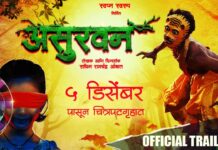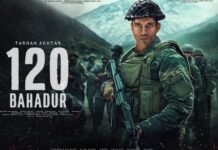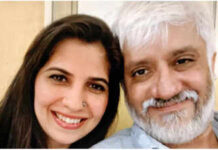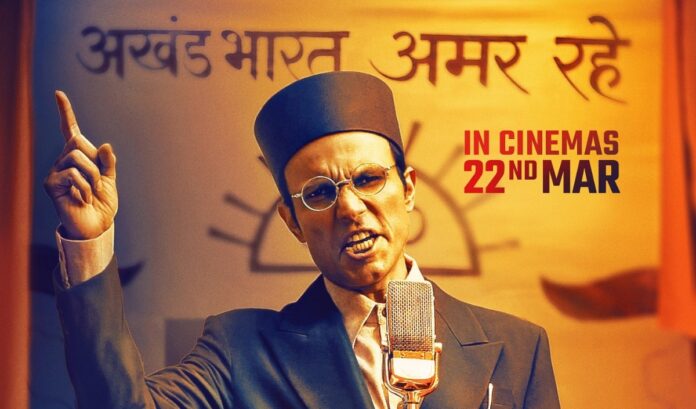Zee Studios, Anand Pandit Motion Pictures, Legend Studios, Avak Films and Randeep Hooda Films’ Swatantrya Veer Savarkar (UA) is the story of Indian freedom fighter Veer Savarkar who went to London to study law and waged war against the British Empire in India while he was studying in London. The film underlines his ideology of an undivided India after Independence and his philosophy of Hindutva.
Utkarsh Naithani has written a story based on chapters from history books. While the story emphasises that the Indian freedom struggle was not just a non-violent one but also had its share of violence, it tells about history which we all are aware of, though definitely not in as much detail as the story in the film deals with. The novelty factor comes at intervals as the common man may not be aware of the intricate details of this chapter of history. But it is not a story which many among the audience may want to revisit. Of course, the opposing ideologies of Mahatma Gandhi (non-violence) and Savarkar (violence) have been presented boldly but that’s the only new angle. Utkarsh Naithani’s screenplay is engaging but having said that, it must be added that it has sectional appeal if only because the viewers may not be universally in the mood to watch this kind of drama. Also, the in-depth insight into the drama from Veer Savarkar’s point of view may not be everyone’s idea of entertainment. The portion of the drama, in which Savarkar is being deported to India by the British court is too class-appealing. The initial scenes and sequences in the cellular jail are pretty impactful and move the audience emotionally. The scenes of the cellular jail when Savarkar and Sir Craddock come face-to-face are well written in the beginning but they bore once Savarkar starts penning a petition, in which, incidentally, the dialogues are more in English. The portion of the drama which deals with Gandhi’s stance gets boring. Scenes about the Hindutva ideology will definitely engage the audience. The drama appears scattered in the last part, with the focus shifting from Savarkar. Utkarsh Naithani’s dialogues are quite nice but there aren’t too many clap-worthy dialogues.
Randeep Hooda does a fine job in the title role. He uses all the skill and energy at his command to play the Indian revolutionary. His transformation (in appearance as he ages in the cellular jail) is fantastic. Ankita Lokhande performs ably as his wife, Yamunabai. Amit Sial is excellent as Babarao. Rajesh Khera leaves a fantastic mark as Gandhi. Mrinal Dutt is effective as Madanlal Dhingra. Chetan Swaroop makes a fine impression as Narayan. Russel Banks is superb as Barry. Palle Singh leaves a wonderful mark as Mirza. Raymond Francisco is very good as Sir Reginald Craddock, home secretary, government of India. Santosh Ojha is nice as Lokmanya Tilak. Rahul Kulkarni has his moments as Gokhale. Jay Patel is natural as Shyamji. Anjali Hooda is very effective as Madame Cama. Brajesh Jha makes his presence felt in the role of Subhas Chandra Bose. Sanjay Sharma is impressive in the role of Jawaharlal Nehru. Chirag Pandya performs well as Nathuram Godse. Sal Yusuf impresses a lot as Atlee. Tirtha Murbaadkar (as Yesu Vaini), Gary John (as King George VI), Balkrishna Mishra (as Dadabhai Navroji), Bhushan S.R. (as Vasudev Chapekar), James Murphy (as Churchill), Jay Sutaria (as Bhan Singh), Nitesh Thakur (as Hardayal), Prasanna Ketkar (as Chiplunkar), Ryan Walters (as Lord Mountbatten), Sagar Shinde (as Abhinav Bharat member), Sharad Jadhav (as the Hindu prisoner), Shivam Singh (as Bapat), and the others provide very nice support.
Randeep Hooda’s direction is mature. But it must be added that he has made a very lengthy film which gets boring at places. Music (by Vipin Patwa and Sambata) is fair. Lyrics (Dr. Sagar and Sambata) are meaningful. Background music (by Mathias Duplessy and Sandesh Shandilya) is quite impactful. Arvind Krishna’s cinematography is excellent. Abdul Javed Shaikh’s action and stunt scenes are thrilling. Nilesh Wagh’s production designing, and Sachin Prakash Patil’s art direction are of a fine order. Editing (Kamesh Karna and Rajesh Pandey) is quite sharp.
On the whole, Swatantrya Veer Savarkar is a well-made film but it is class-appealing and also too lengthy. Although it exploits the Hindutva sentiment full-throttle, it has its limitations because it is a historical (which the audience in large numbers will not be in favour of watching) and also because it has more class appeal than mass appeal. Hence it will flop at the box-office.
Released on 21-3-’24 at Inox (1 show; in daily 4 shows from 22-3-’24) and other cinemas of Bombay by Zee Studios. Publicity: average. Opening: weak. …….Also released all over. Opening was poor everywhere.





























